Stroom Invest interview / artist Florentijn de Boer
The atelier of visual artist Florentijn de Boer in Maakhaven is large and chock-full. A wooden group of abstracted figures stands next to a large desk that is full of scraps, notes, books and photoshop prints. A large pile of oil crayons on a table flaunts between the walls that are full of paintings and loose sheets. It reflects the various techniques that Florentijn will use in the coming period to develop an alphabet of visual language in three dimensions, her very own sculptural garden.
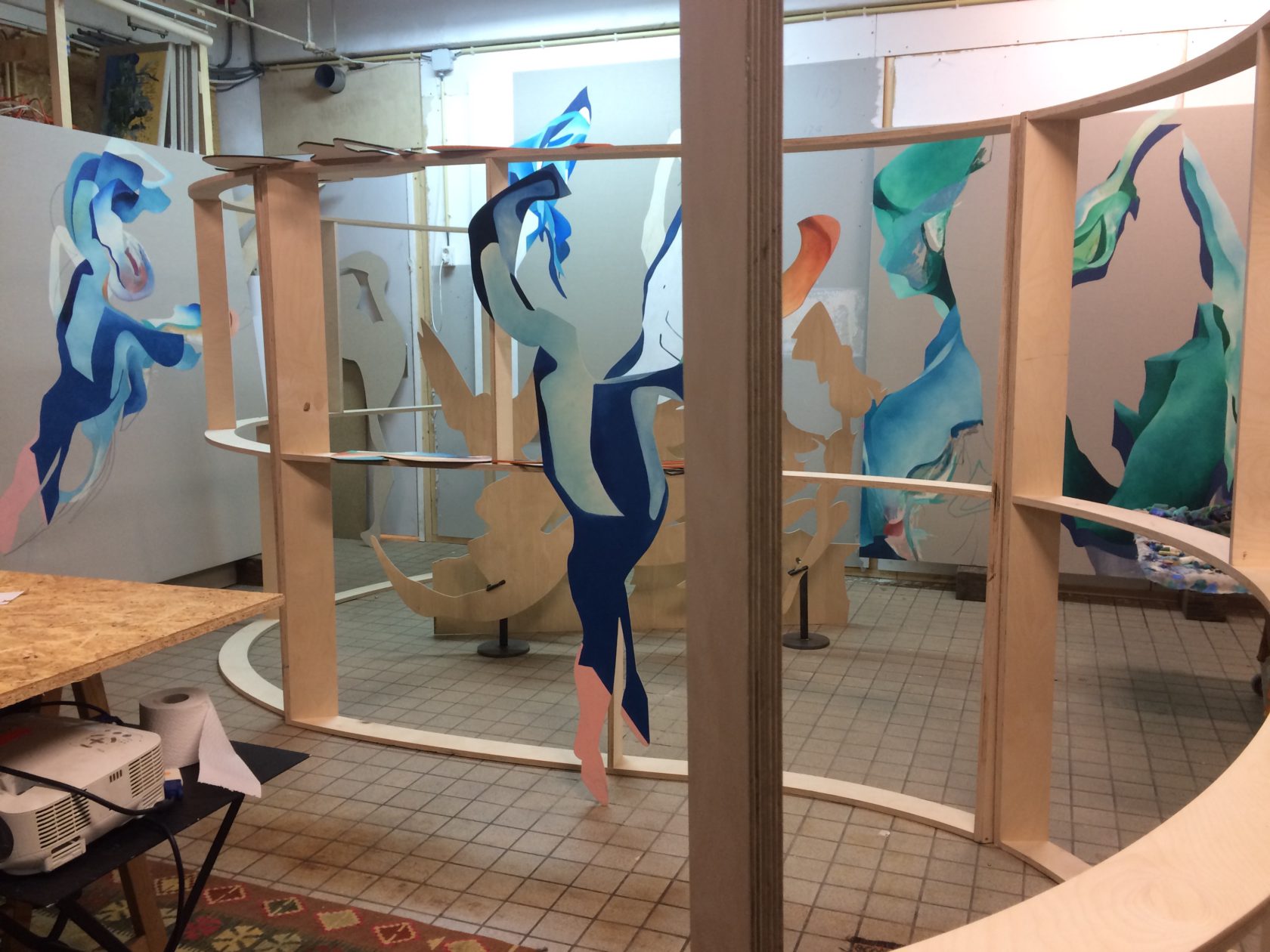
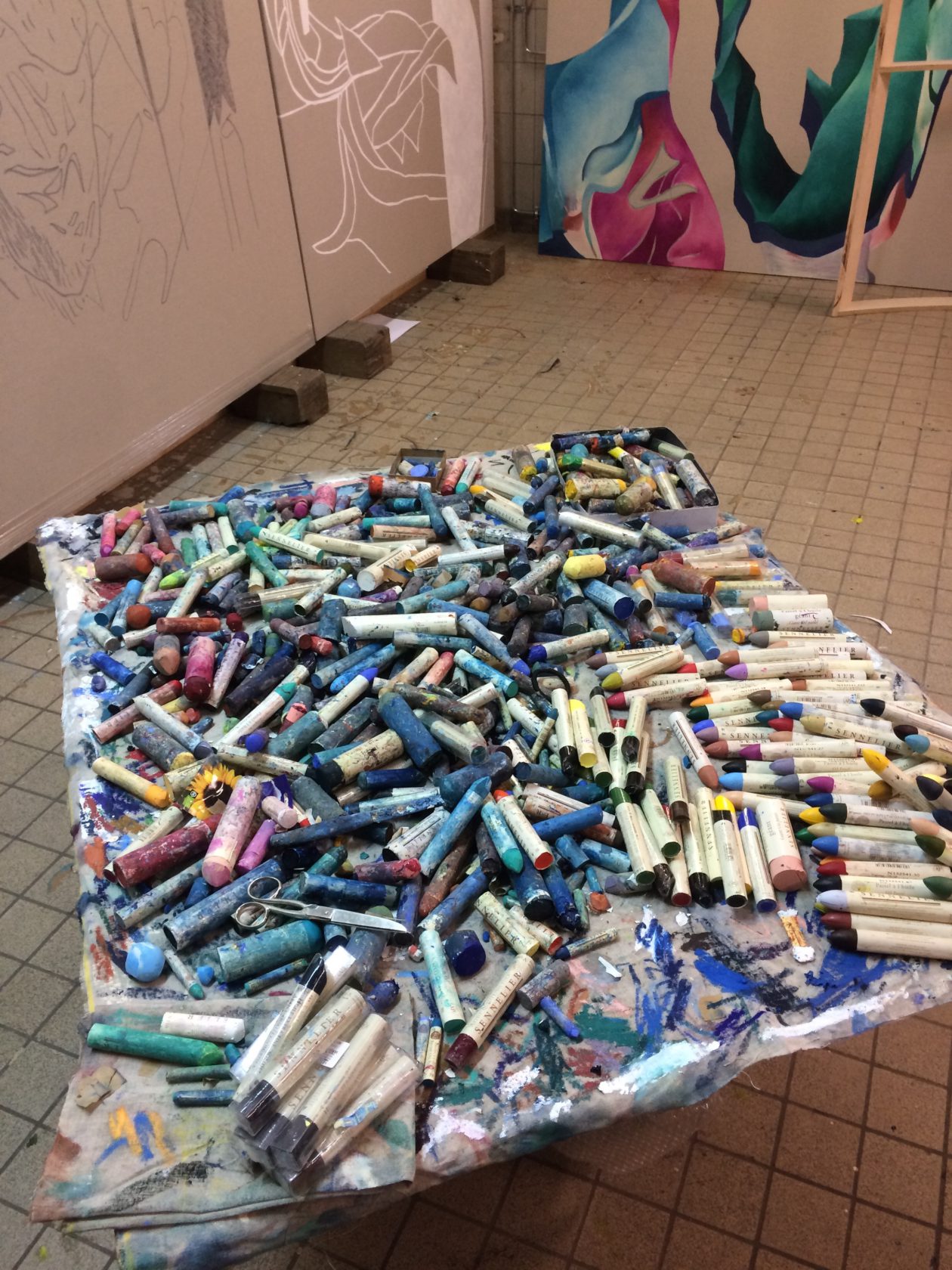
When I look in your bookcase, I see many books about the artists Frank Stella, Henri Matisse, Vincent van Gogh and David Hockey. Who has influenced you the most?
Matisse is very important to me. I already knew him, but I think his way of documenting and reproducing certain forms, his so-called cutouts, is fantastic. When I just graduated, my work went very fast and, just like Matisse, I started to document my works so that I could recognize shapes – often floating figures – that I painted in other works. I always drew with the intense colors of oil chalk on natural canvas. My figures were very full, the shapes in my works were nicely thickly colored. Then I saw Hockney and I try to get away from it and allow the drawing-like into my work. I also just started painting with oil.
You’ve also been to Italy for six months to sculpt?
I was at the KABK in The Hague and went to Carrara, the marble city of Italy, with an exchange project. I wanted to learn something completely different, really learn a craft and I lived for six months above a marble studio in Carrara. There I had to draw skeletons, work with bronze, make molds and clay portraits. Everyone was able to draw very well there and I was drawing the skeletons in my own way, but that was not allowed, you had to reproduce. I was very bad at it. I loved the fact that everybody worked; you got up at 7 AM every day, worked, had lunch together, worked more and at the end of day went out. It was a good rhythm and I also maintain that here in the Netherlands.

How did you like working with material that is so solid, while working with material that is so fluid?
Marble carving is very hard work and you cannot make a mistake, so you have to come up with everything beforehand. I wasn’t good at it. But I have learned a great deal there that I still use today, such as mold making techniques and working with wax. I wanted to stay there, but I needed to finish the academy so I went back to the Netherlands. It was difficult because I enjoyed being back, but I also felt isolated. So I made a seven-part painting, ‘To bite one’s own tail’, about coming home and the temptations of good and bad.

Why do you give your abstract works a stimulating title?
‘To bite one’s own tail’ refers to my feeling about coming back to the Netherlands and the game of temptation of good and evil. The cat is playing, but returns to reality by biting its tail, the game is broken as it were. And the S shape (serpentine line) of the canvas is really important, it gave reason to the title. ‘Full of Scorpions is My Mind’ is about how my appearance does not communicate with how I really am. People think that I am a lot nicer than I actually am. I read in Stephen Fry’s book Mythos that the titan Kronos, after devouring his children and getting sick from eating an embossed stone (that his wife Rhea gave him so he would stop eating their children), said: “My head is full of scorpions, I’m sorry for that.” At the same time I also read ‘Kafka on the Beach’ by Haruki Murakami where I read about a man who felt too stupid to protect his mind against demons. Those two books and that particular sentence go to the back of my head and pop up when I’m working,
You often create floating figures in abstracted environments, how do you start a work and how long have you been working on it?
It depends, some I make very quickly but this (photo) lasted half a year. I had read the book ‘The murder of Commendatore’ by Haruki Murakami and as a result I made a line drawing of a floating figure on canvas. I also made that line drawing in wood, so that I could use it as a template. I wanted to use that figure. Now there are several figures, in various settings and materials.
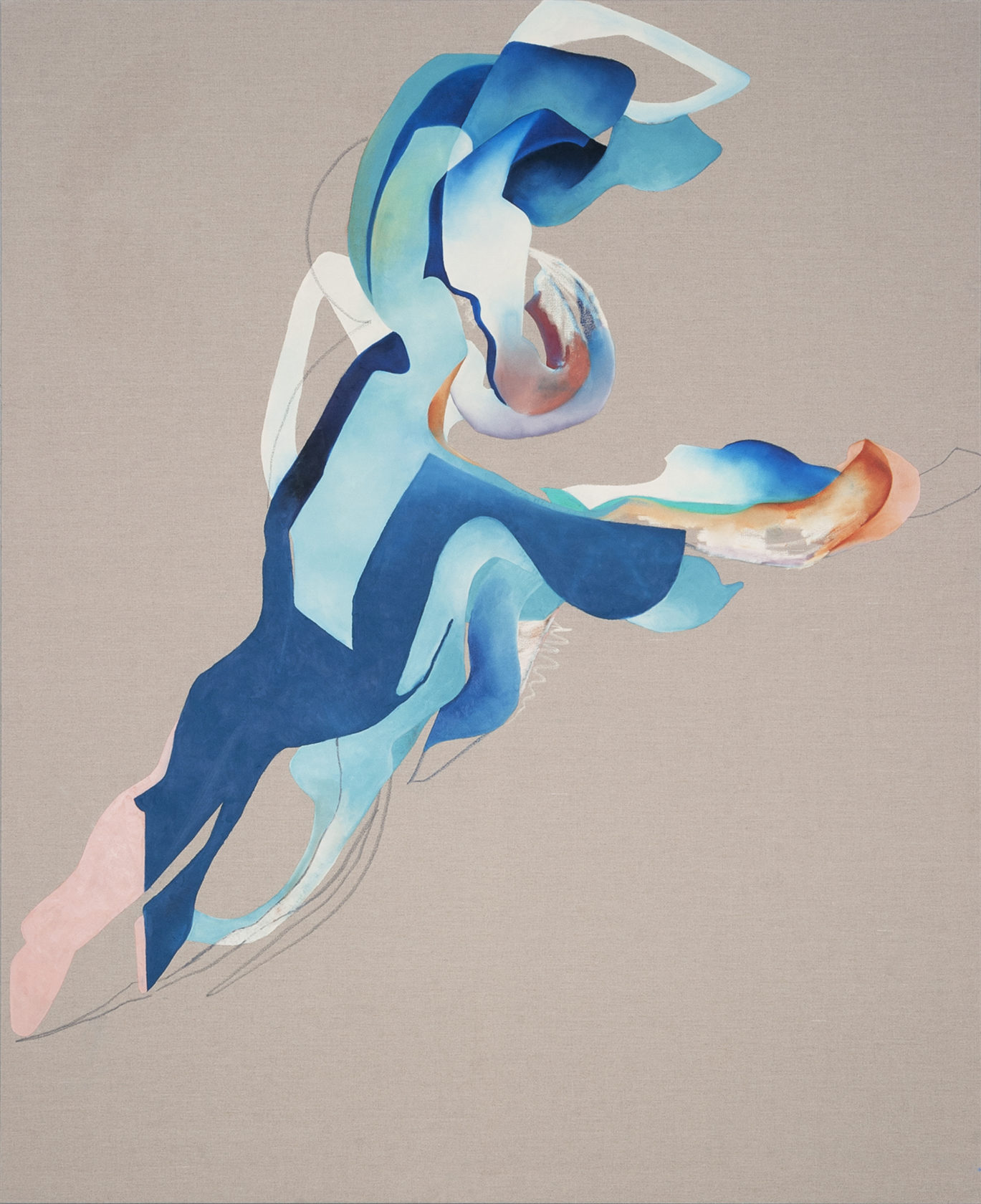
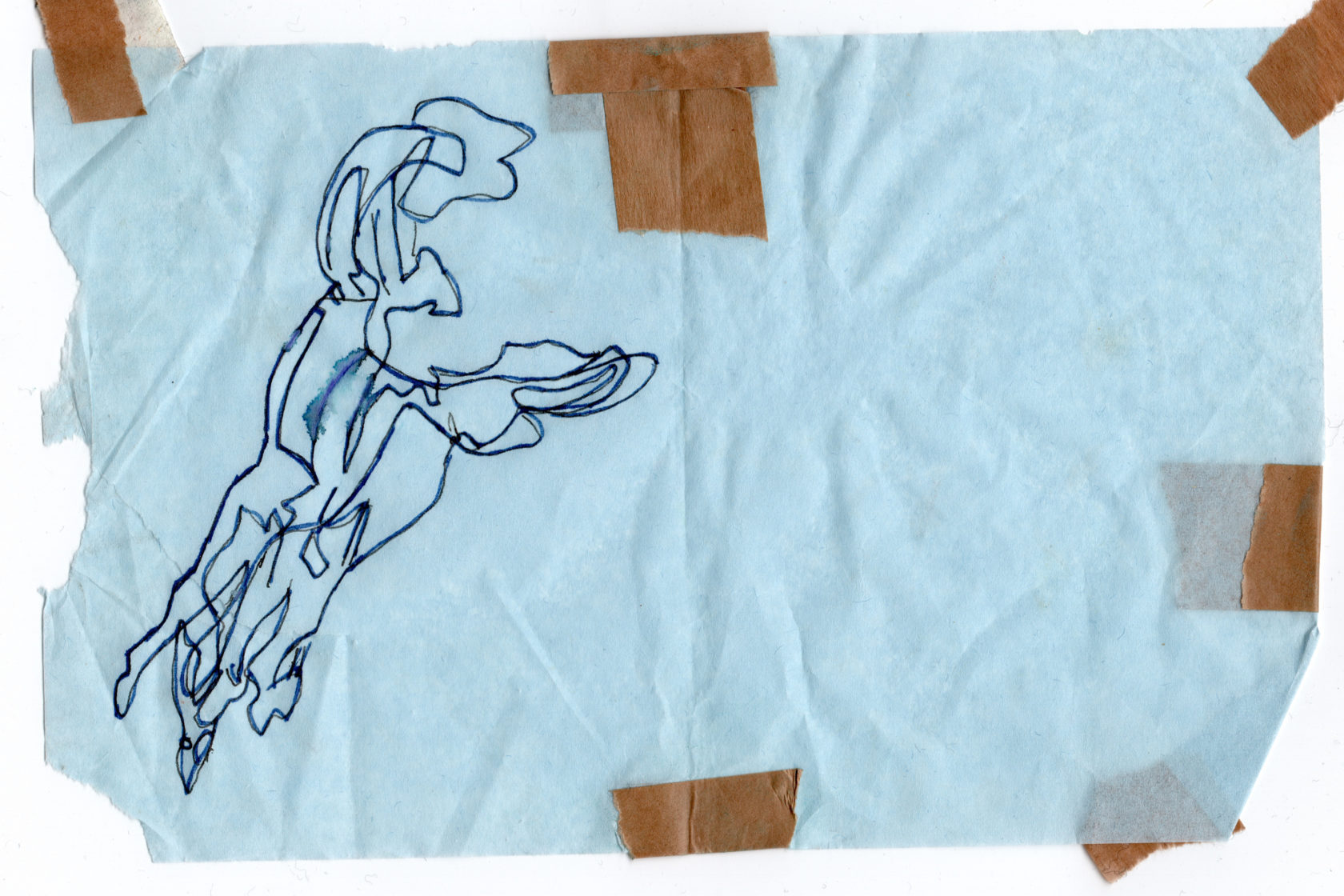
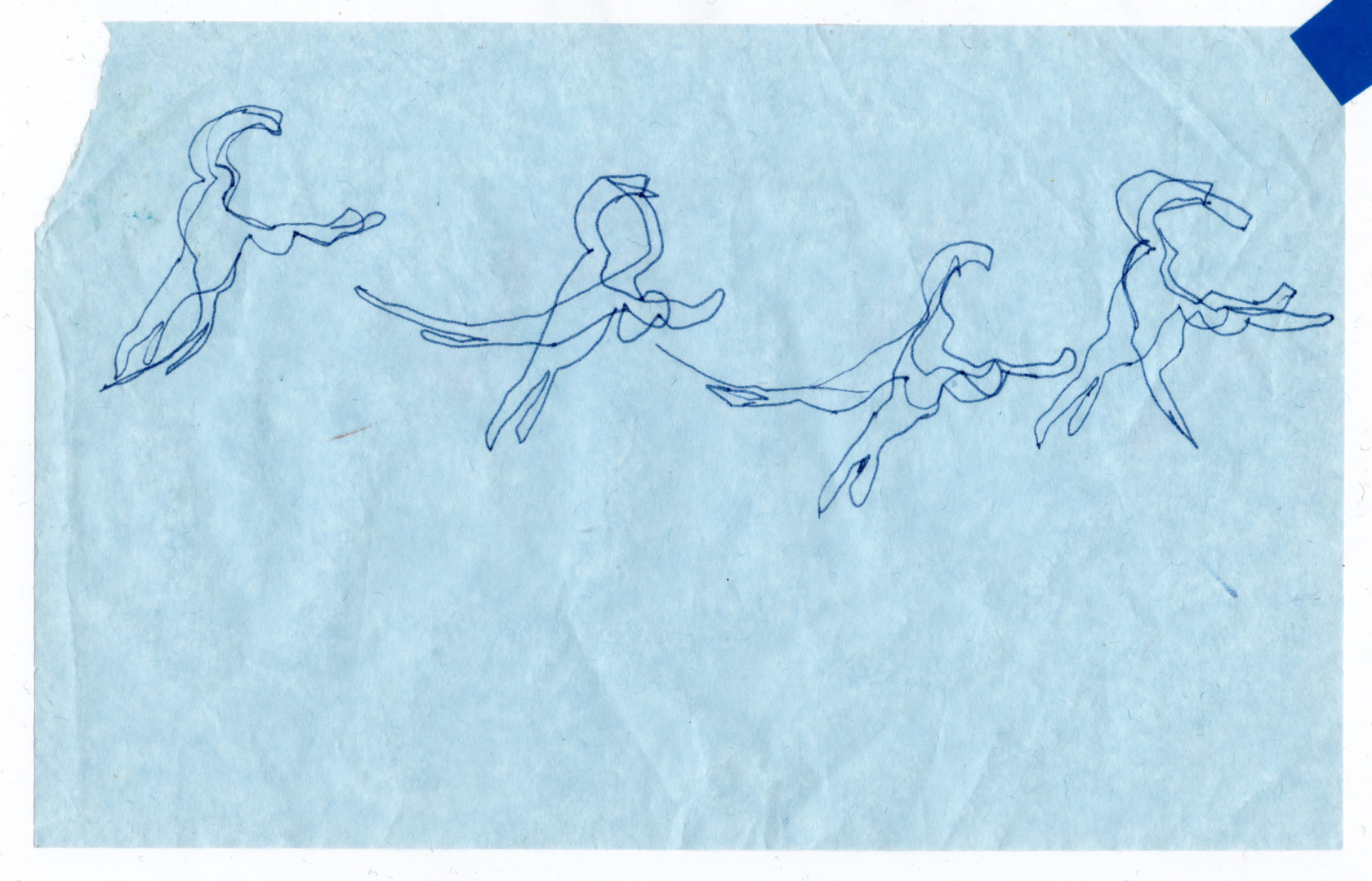

By documenting do you see figures or lines coming back?
Yes, but I also derive forms from other paintings so I zoom in on them, repeat them in pen drawings or distort it via photoshop. Recently my images react to each other in different media, and I want to do more with that. Now I also want to make an alphabet from my own visual language, inspired by an etching by William Hogarth (which I found in a book about Matisse) about a sculpture garden of a friend of Socrates. That garden contains the most beautiful or typical sculptures; with ideal proportions etc. My research is about making a sculpture garden with my own images, a painting in 3D.

When did you feel the need to let go of the flat surface?
In fact, I always feel that. I also call my spatial works in a room a painting, because everything remains flat. But more layers must be added, all figures must be given a place and the whole story must be finished. In March, I had an exhibition in Rademakers Gallery for which I wanted to make a three-dimensional painting, but it was too soon. Then I exhibited paintings and added a publication, so that I could explain what my intention was. In the publication the reader can see and combine cutouts, sketches and photos of my work. I like it when people are stimulated to make new combinations and get to work.
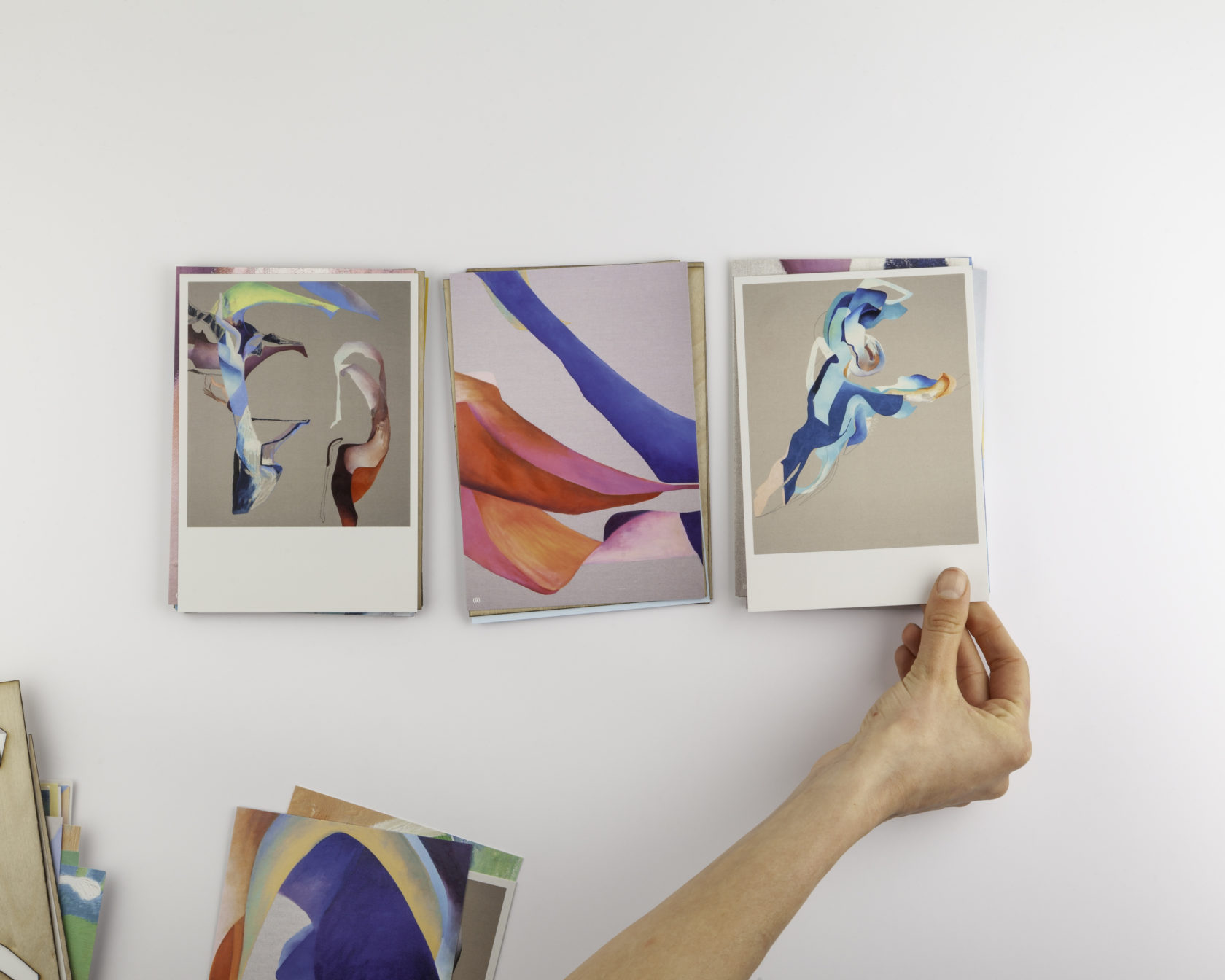
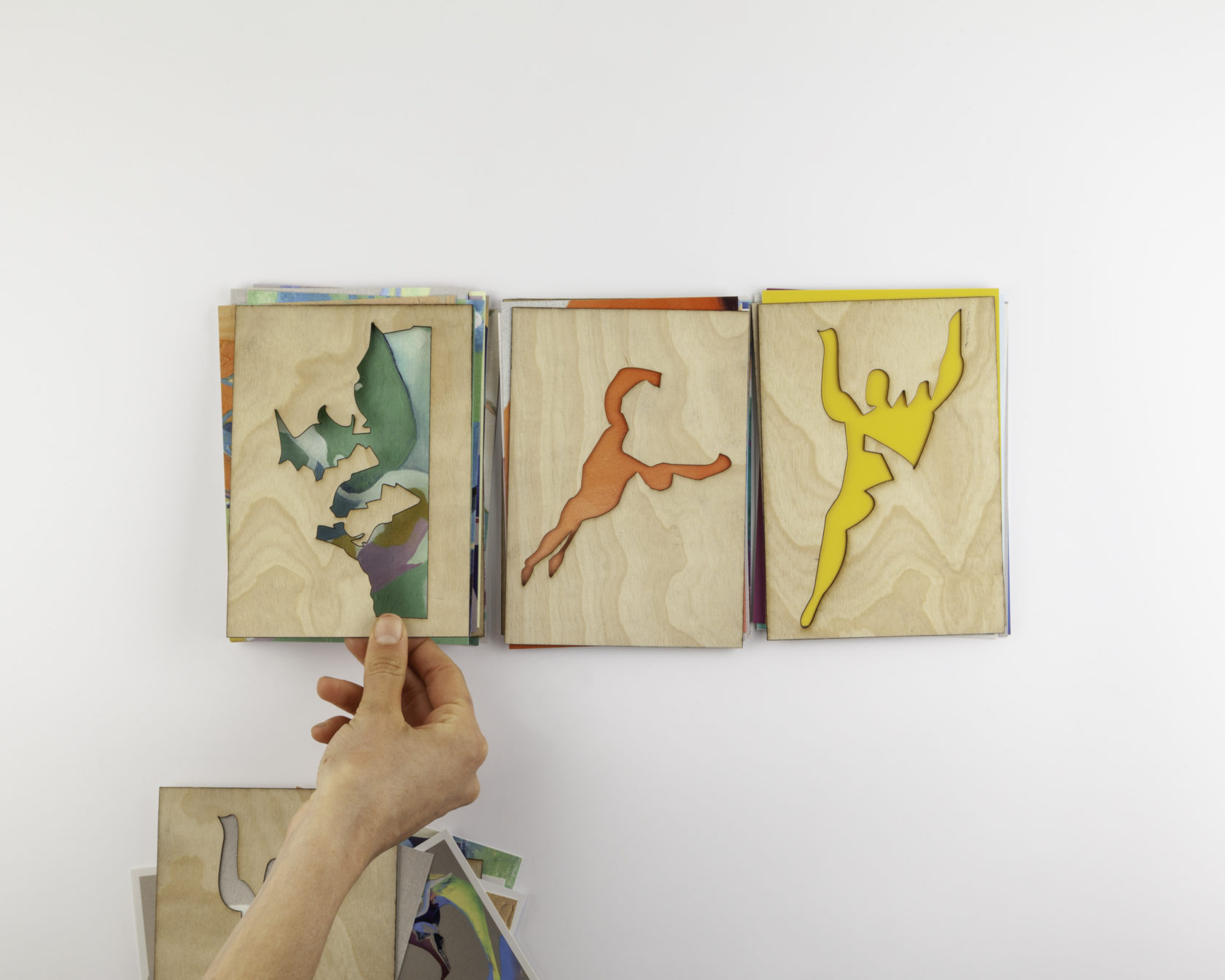
If you work alone in your studio is it difficult to think about how your work interacts with someone else?
At some point I have to talk to people about it if it communicates. The paintings that I sell already contain quite a few elements of my story and the people who buy my work follow me and that helps. But I have to say that I am very on my own and that it will be good to talk about it with others, for example in the Stroom Invest Week.
—————————————–
In a collaboration between Jegens & Tevens and Stroom Den Haag a series of interviews will be published with (inter)national curators, artists and critics participating in Stroom’s Invest Week 2019.
The Invest Week is an annual 4-day program for artists who were granted the PRO Invest subsidy. This subsidy supports young artists based in The Hague in the development of their artistic practice and is aimed to keep artists and graduates of the art academy in the city of The Hague. In order to give the artists an extra incentive, Stroom organizes this week that consists of a public evening of talks, a program of studio visits, presentations and a number of informal meetings. The intent is to broaden the visibility of artists from The Hague through future exhibitions, presentations and exchange programs. The Invest Week 2019 will take place from 17 to 21 June.